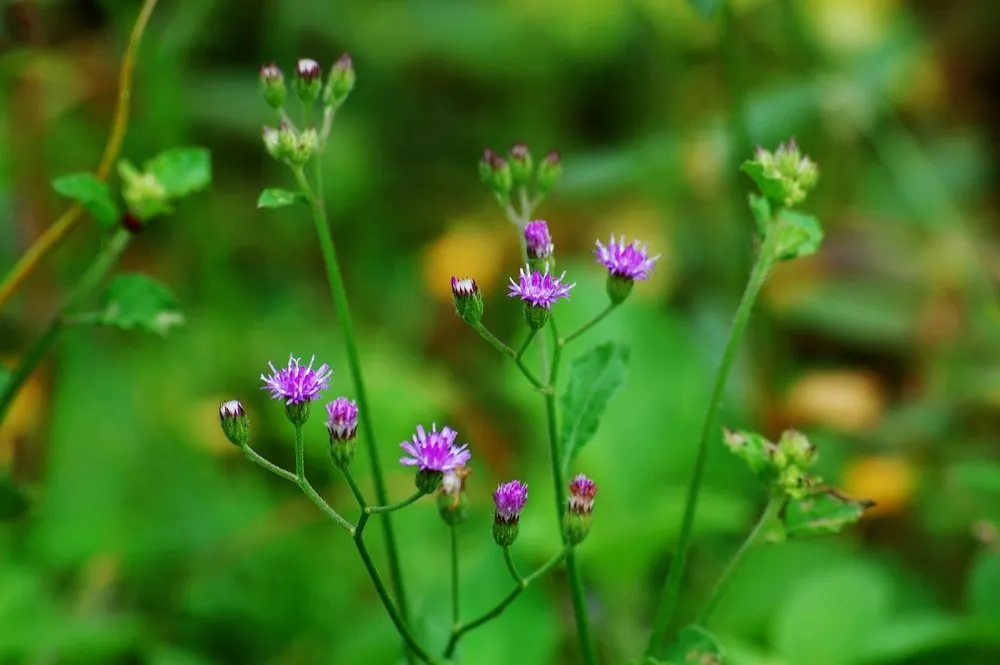
Medicinal plants are often used for the treatment of a wide range of conditions, and one such plant is Vernonia cinerea. The plant is also known as Sahadevi. This article will explain the morphology of the Sahadevi plant, and its Medicinal benefits. We’ll also discuss its effects on the urinary system. And you’ll learn what Ayurveda says about the plant.
Table of Contents
Vernonia cinerea in Ayurveda
A plant known as Vernonia cinerea (L.) is an important Ayurvedic herb used to treat fever, wounds, and localized swelling. Its medicinal properties also include antimicrobial and antioxidant properties. Vernonia cinerea is an herb that is commonly found in temperate regions and is used in the treatment of various diseases, including cancer. Its properties include triterpene compounds, luteolin-7 mono-beta-D-glucopyranoside, flavonoids, and polyphenols.
It is a perennial herb that grows to a height of 15-30 cms. Its leaves lack a stalk and have a diaphoretic effect. It is also used to treat piles, intestinal worms, skin diseases, and blood disorders. In Ayurveda, it is a powerful herb for hair growth, skin health, and general health. This herb is also a popular choice for ayurvedic practitioners in the treatment of baldness and poor memory.
Its leaves are used for a variety of conditions, including skin infections, eruptive boils, and cough. The juice obtained from this plant is also used for skin wounds and infections, such as acne and colic. Leaf extract is also used to treat cough, diarrhea, and leprosy in children. It has antibacterial, antihelmentic, and anti-inflammatory properties.
What Ayurveda says about Sahadevi plant
What Ayurveda says about the Sahadevi plant is that it can treat several ailments. According to the Ayurvedic Pharmacopoeia of India, this plant is useful in the treatment of intermittent fever, urinary tract infections, filariasis, and boils. Other uses for Sahadevi include urinary incontinence and skin problems.
In traditional Ayurveda, the reproductive tissue is related to ojus, the body’s immune system. Any plant that affects the sukra will affect the ojus.
Morphology of Sahadevi Plant
The morphology of the Sahadevi plant is not a mystery. The plant is a member of the Asteraceae family and is known for its branched, erect shape. Sahadevi is effective in breaking down renal stones. Its leaves are also used for various skin problems, including psoriasis.
The root of the Sahadevi plant is cylindrical and gradually tapering to a diameter of about 2 cm. Only the lower portions branch. The surface is rough and longitudinally wrinkled. The inner bracts are hairy. The flowers are similar in shape and size. They are bluish-purple in color. They are glabrous, but lack a stigma. The plant produces numerous seed pods.
Medicinal benefits of Sahadevi
The ethyl acetate and chloroform fractions of Vernonia cinerea have antimicrobial activity against pathogenic bacteria and fungi. The test organisms included Escherichia coli, Pseudomonas aeruginosa, and Bacillus subtilis. The bacterial and fungal cultures were prepared with 0.5 McFarland standards. The test organisms were spread by using sterile swabs.
Antimicrobial and antioxidant activities were determined in a study of Vernonia cinerea. The herb showed potent antimicrobial and antioxidative activities against most human pathogenic bacteria. Total phenolic and flavonoid content was determined and the activity was correlated to its antioxidant and antimicrobial properties.
The ethyl acetate fraction had the highest antioxidant and antimicrobial activities and may be considered a candidate for future antimicrobial drugs. The leaves of Vernonia cinerea are used for treating cough, dysentery, and colic. Leaf juice extract is used to treat skin problems, as well as cough and smoking cessation. It is also used for treating diarrhea and dysentery in children. The herb is also used to treat malaria and urinary calculi. The herb has anti-inflammatory, antioxidant, and antihelmentic activities
